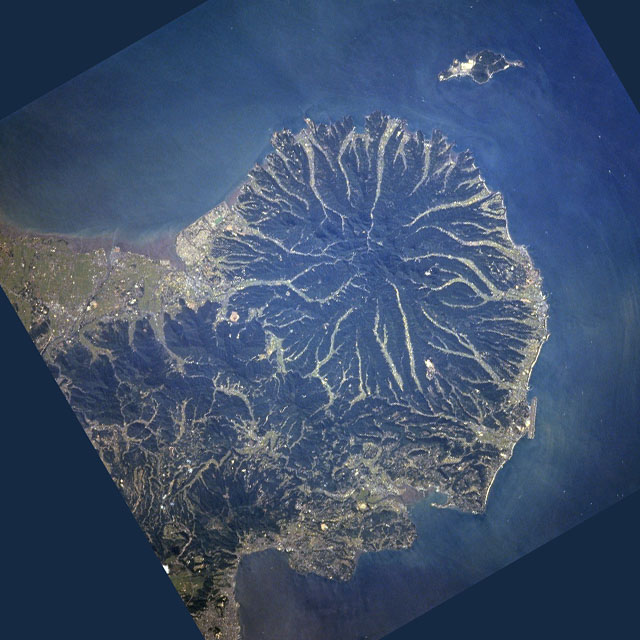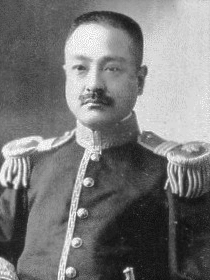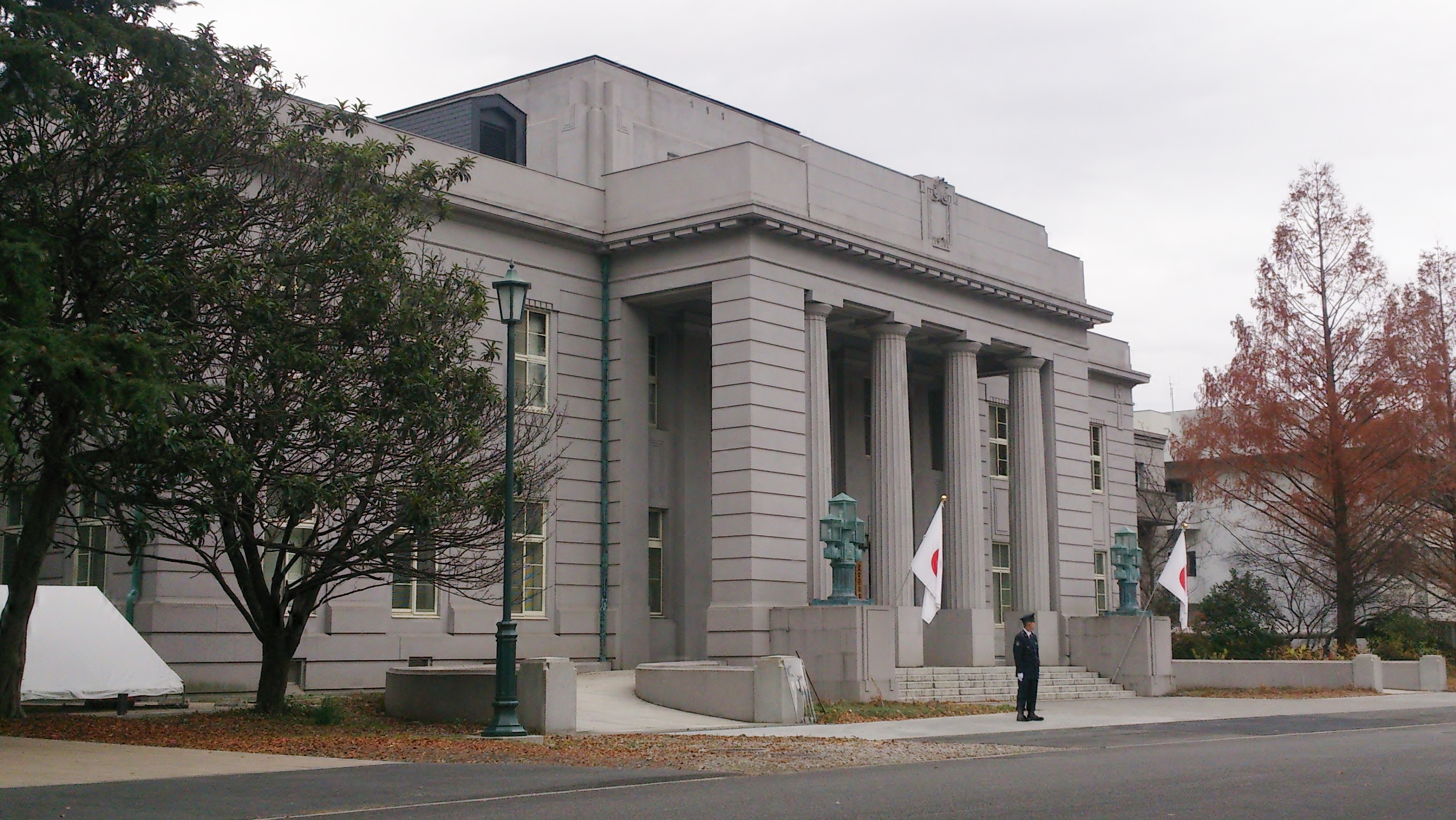|
Motoda Hajime
was a Japanese politician and cabinet minister in the Meiji, Taishō and early Shōwa periods of the Japan. Biography Motoda was born in Bungo Province in what is now part of Kunisaki, Ōita, where his father, Inomata Eizo was a doctor. He was adopted by Motoda Naoshi, a samurai in the service of Kitsuki Domain on his marriage to Motoda’s daughter. Following the Meiji Restoration, he went to Tokyo, and graduated from Tokyo Imperial University with a legal degree in 1880. In the first Japanese general election of 1890, Motoda was elected to the lower house of the Diet of Japan. He was reelected 16 times, mostly under the Rikken Seiyūkai party, serving for over 40 years, including three terms as Vice-Speaker of the House from 1889-1892. Under the administration of Prime Minister Yamamoto Gonnohyōe (1913–1914), Motoda was appointed Communications Minister. He subsequently served as the first Railroad Minister, when that cabinet-level post was created under the Hara Tak ... [...More Info...] [...Related Items...] OR: [Wikipedia] [Google] [Baidu] |
Kunisaki, Oita
is a small coastal city located in Ōita Prefecture, Kyushu, Japan. It is located on the Kunisaki Peninsula facing the Seto Inland Sea. Mostly covered by forests and farmlands, the peninsula is dotted with temples. The modern city of Kunisaki was founded on March 31, 2006, from the merger of the former town of Kunisaki, absorbing the towns of Aki, Kunimi and Musashi (all from Higashikunisaki District). As of March 31, 2017, the city has an estimated population of 29,098, with 13,223 households and a population density of . The total area is . Oita Airport is located in Kunisaki. History Nuclear-free zone On June 25, 2008, the City of Kunisaki declared itself a 'Nuclear-free Peace City" in wishing the abolition of nuclear weapons and world permanent peace. Geography Located in northern Kyushu and the north east of Oita prefecture. Mountains * Mt. Futago (Futago-san) at 720m and the tallest * Mt. Monju (Monju-san) * Mt. Odomure * Mt. Otake * Mt. Takeshi Washinosu * M ... [...More Info...] [...Related Items...] OR: [Wikipedia] [Google] [Baidu] |
Yamamoto Gonnohyōe
, was an admiral in the Imperial Japanese Navy and twice Prime Minister of Japan from 1913 to 1914 and again from 1923 to 1924. Biography Early life Yamamoto was born in Kagoshima in Satsuma Province (now Kagoshima Prefecture) as the sixth son of a samurai who served as a secretary and ''sōjutsu'' master of the Shimazu clan. As a youth, he took part in the Anglo-Satsuma War. He later joined Satsuma's Eighth Rifle Troop in the Boshin War that ended the Tokugawa shogunate, fighting at the Battle of Toba–Fushimi and other locations; he was also aboard one of the ships that pursued Enomoto Takeaki and the remnants of the Tokugawa fleet to Hokkaidō in 1869. After the success of the Meiji Restoration, Yamamoto attended preparatory schools in Tokyo and entered the 2nd class of the Imperial Japanese Naval Academy in 1870. At the time of the Satsuma Rebellion, he briefly returned to Kagoshima, but at the urging of Saigo Takamori, he returned to the Naval Academy before the start of c ... [...More Info...] [...Related Items...] OR: [Wikipedia] [Google] [Baidu] |
1858 Births
Events January–March * January – **Benito Juárez (1806–1872) becomes Liberal President of Mexico. At the same time, conservatives install Félix María Zuloaga (1813–1898) as president. **William I of Prussia becomes regent for his brother, Frederick William IV, who had suffered a stroke. * January 9 ** British forces finally defeat Rajab Ali Khan of Chittagong ** Anson Jones, the last president of the Republic of Texas, commits suicide. * January 14 – Orsini affair: Felice Orsini and his accomplices fail to assassinate Napoleon III in Paris, but their bombs kill eight and wound 142 people. Because of the involvement of French émigrés living in Britain, there is a brief anti-British feeling in France, but the emperor refuses to support it. * January 25 – The ''Wedding March'' by Felix Mendelssohn becomes a popular wedding recessional, after it is played on this day at the marriage of Queen Victoria's daughter Victoria, Princess Royal, to Pri ... [...More Info...] [...Related Items...] OR: [Wikipedia] [Google] [Baidu] |
Mosuke Kawahara
Mosuke (written: 茂助 or 喪助) is a masculine Japanese given name. Notable people with the name include: *, Japanese samurai *, Japanese dermatologist {{given name Japanese masculine given names Masculine given names ... [...More Info...] [...Related Items...] OR: [Wikipedia] [Google] [Baidu] |
Shigeru Morita
Shigeru (written: , , , in hiragana or in katakana) is a masculine Japanese given name. Notable people with the name include: *, a Japanese architect *, a Japanese voice actor *, Japanese karateka *, Japanese sport wrestler *, Japanese socialist politician *, Japanese painter and printmaker *, Japanese actor and singer *, Japanese artistic gymnast *, Japanese Ainu activist *, Japanese baseball player *, Japanese rower *, a video game designer for Nintendo, notable for creating Mario among many other characters *, expert on yokai and creator of the popular manga series ''Ge Ge Ge no Kitaro'', and others *, Japanese baseball player *, Japanese voice actor *, Japanese politician *, Japanese karateka *, Japanese general *, Japanese ice hockey player * Shigeru Takashina (1943–2013), Japanese karateka *, a Japanese automotive team lead, designer, and engineer at Honda, notable for his work on Honda NSX and Honda S2000 projects *, a Japanese film score composer *, Japanese diplomat an ... [...More Info...] [...Related Items...] OR: [Wikipedia] [Google] [Baidu] |
Enkichi Ōki
Count was a Japanese statesman in the Taishō period. Ōki was born in Tokyo. His father, Ōki Takatō was one of the leaders in the Meiji Restoration, and served in numerous cabinet posts in the early Meiji government. In 1899, Enkichi succeeded to his father’s title of count (''hakushaku'') under the ''kazoku'' peerage system. His political career began in 1908, when he was elected to the House of Peers. He initially supported the '' Kenkyūkai'', but soon switched his allegiance to the ''Rikken Seiyūkai''. He was appointed Justice Minister under the cabinet of Prime Minister Hara, a post which he also held under the succeeding Takahashi administration. In 1923, he cooperated with Home Minister The Minister of Home Affairs (or simply, the Home Minister, short-form HM) is the head of the Ministry of Home Affairs of the Government of India. One of the senior-most officers in the Union Cabinet, the chief responsibility of the Home Minist ... Tokonami Takejirō to introd ... [...More Info...] [...Related Items...] OR: [Wikipedia] [Google] [Baidu] |
Taketomi Tokitoshi
was a Japanese politician and cabinet minister in the Meiji and Taishō periods of Japan. Biography Taketomi was born in Saga as the eldest son of a samurai in the service of the Saga Domain. After the Meiji Restoration, he travelled to Tokyo to study the English language, but soon returned to his native Saga. He participated in the Saga Rebellion of 1874 against the Meiji government. After the failure of the rebellion, he returned to Tokyo and studied at the Daigaku Nankō, and later met Soejima Taneomi who turned his interest to politics. He was one of the founders of the Kyushu Kaishintō in 1882 and the ''Hizen Nippō'' newspaper. Elected to the Saga Prefectural Assembly in 1883 and became chairman of the assembly in 1885. Taketomi was elected to the lower house of the Diet of Japan in the 1890 General Election. Although defeated in the 1892 General Election, he was reelected in the March 1894 General Election, and served twelve consecutive terms until 1924. He was on ... [...More Info...] [...Related Items...] OR: [Wikipedia] [Google] [Baidu] |
Aoyama Cemetery
is a cemetery in Aoyama, Minato, Tokyo, Japan, managed by the Tokyo Metropolitan Government. The cemetery is also famous for its cherry blossoms, and at the season of hanami, which many people would visit. History The cemetery was originally the land of the Aoyama family of the Gujō clan (now Gujō, Gifu) in the province of Mino (now Gifu). Japan's first public cemetery was opened in 1874, and in the Meiji era was the main locations of foreigners' graves. The cemetery has an area of 263,564 m2. Japanese section The Japanese section includes the graves of many notable Japanese, including: * Hachikō * Amino Kiku * Gotō Shōjirō * Ichikawa Danjūrō IX * Ichikawa Danjūrō XI * Kitasato Shibasaburō * Nakae Chōmin * Nogi Maresuke * Ōkubo Toshimichi * Otoya Yamaguchi * Sasaki Takayuki * Shiga Naoya * Nishi Takeichi *Osachi Hamaguchi Tateyama Branch The cemetery also has a Tateyama branch, where Nagata Tetsuzan, Kimura Heitarō, and Sagara Sōzō are buri ... [...More Info...] [...Related Items...] OR: [Wikipedia] [Google] [Baidu] |
Privy Council (Japan)
The was an advisory council to the Emperor of Japan that operated from 1888 to 1947. It was largely used to limit the power of the Imperial Diet. Functions Modeled in part upon the Privy Council of the United Kingdom, this body advised the Japanese Empire on matters including, but not limited to: * Proposed amendments to the Constitution of the Empire of Japan * Proposed amendments to the 1889 Imperial Household Law * Matters of constitutional interpretation, proposed laws, and ordinances * Proclamations of martial law or declaration of war * Treaties and other international agreements * Matters concerning the succession to the throne * Declarations of a regency under the Imperial Household Law; * Matters submitted by the Emperor directly The Privy Council had both judicial functions and certain executive functions. However, the council had no power to initiate legislation. Establishment To oversee new governmental developments, in 1871, three councils were created - the ... [...More Info...] [...Related Items...] OR: [Wikipedia] [Google] [Baidu] |
List Of Speakers Of The House Of Representatives Of Japan
The is the presiding officer of the House of Representatives (Japan), House of Representatives of Japan, and together with the President of the House of Councillors, the Speaker is also the head of the Government of Japan, legislative branch of Japan. The Speaker is elected by members of the House at the start of each session, and can serve for a maximum of four years. The current Speaker of the House of Representatives is Hiroyuki Hosoda, who took office on 10 November 2021. Selection The election of the Speaker takes place on the day of the new session, under the moderation of the Secretary-General of the House. The Speaker is elected by an anonymous vote, and must have at least half of the votes in order to take office. If no one gets over half of the votes, the top two candidates will be voted again, and if they get the same number of votes, the Speaker is elected by a lottery. The Vice Speaker is elected separately, in the same way. Usually, the Speaker is a senior membe ... [...More Info...] [...Related Items...] OR: [Wikipedia] [Google] [Baidu] |
Takahashi Korekiyo
Viscount was a Japanese politician who served as a member of the House of Peers, as Prime Minister of Japan from 1921 to 1922, and as the head of the Bank of Japan and Ministry of Finance. Takahashi made many contributions to Japan's development during the early 20th century, including introducing its first patent system and securing foreign financing for the Russo-Japanese War. Following the onset of the Great Depression, he introduced controversial financial policies which included abandoning the gold standard, lowering interest rates, and using the Bank of Japan to finance deficit spending by the central government. His decision to cut government spending in 1935 led to unrest within the Japanese military, who assassinated him in February 1936. Takahashi's policies are credited for pulling Japan out of the Depression, but led to soaring inflation following his assassination, as Takahashi's successors became highly reluctant to cut off funding to the government. Early life ... [...More Info...] [...Related Items...] OR: [Wikipedia] [Google] [Baidu] |






